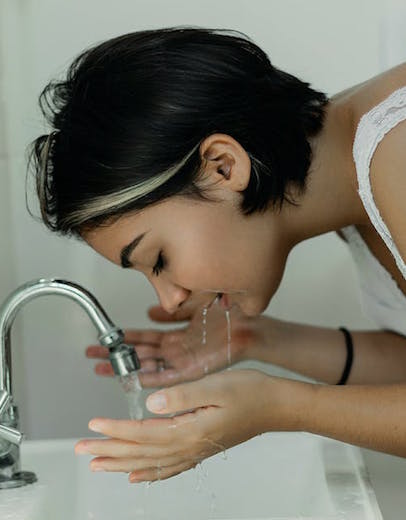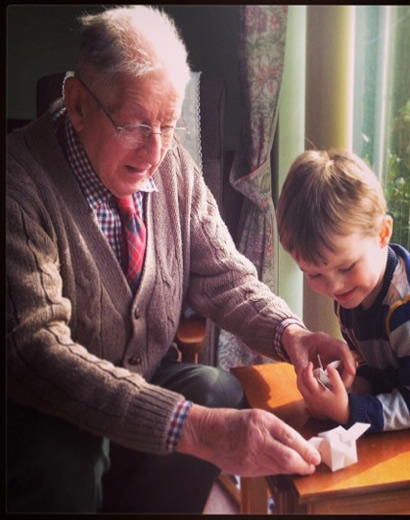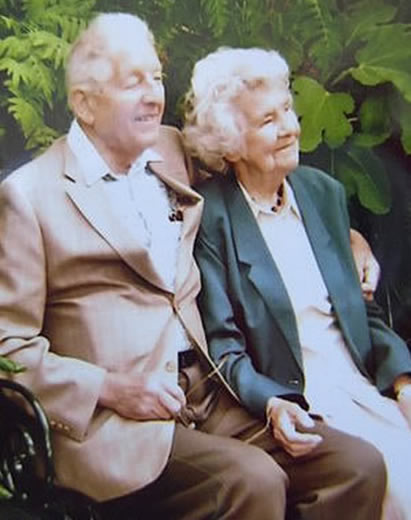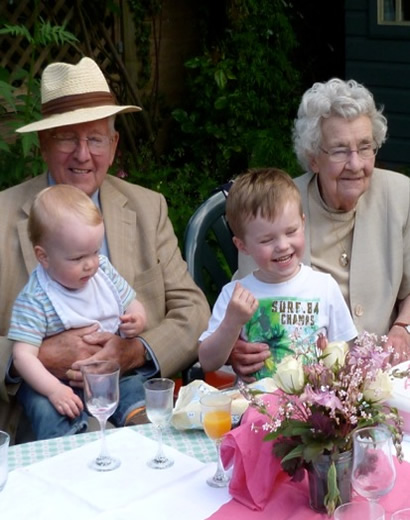Hygiene and Health
There is little doubt when I look at the high standards of hygiene we have at the beginning of the 21st century, that in the twenties and thirties we were just not in the same league. However, besides the fact that it was not so much a necessity as it is today, there were just not the facilities to achieve high standards.
My house in Hornsey Rd was divided in two, with the Mackney family in the top three 3rd floor rooms, and we had the ground and 1st floor.There was no electricity and we relied on gas. Both families only had one cold water tap, we used the downstairs outside toilet , and they used the inside toilet on the 1st floor. I washed in the kitchen and all water had to be boiled in a kettle or on the grate, but there was a marbled topped washstand in the main bedrooms with bowl, jug, slop bucket and chamber pots under all beds. We had a galvanised bath for a weekly bath and that took many kettles to get a few inches of water. Showers were very rare , not even provided at swimming pools, and even during the war I never went anywhere with showers.On the old Malaya, a battleship built in the first World War if you wanted a shower on the wash deck ,you sat in a large bowl on the floor and asked anybody else who was washing to pour a bowl of water over you--there was plenty of hot water. I was in my twenties before I ever took one. At school toilets were the other side of the playground open to the sky with only the cubicles under cover, with no washing facilities, which were not provided in most public toilets.neither were any toilet rolls provided and you were expected to take your own paper usually newspaper
The problem of hot water and the absence of washing meant that clothes washing was usually a big event one day a week, very often on a Monday, when the family had cold meat for dinner, the remains of the Sunday joint.People did not have so many clothes in those days and there was no question of changing everything every day. Even so, for a normal family the weekly wash was a big task, with the boiling of some items if you didnt have a copper,the rub-a-dubbing of others and the mangling ,if you had one, to help with the drying.The higher you could hang it out the better and a dry windy day was always desired.As we did not have electricity Mum used to do the ironing with old flat irons, heated on the gas or fire. By using two she could always have one in use. Another big difference was there were not the abundance of soap powders there are today. Mum used solid bars of Sunlight soap, soda,and ,as they became available, soap flakes for special items. Detergents were in their infancy and not available.In 1938, after the death of her husband,my Sister Mary worked at the offices of a firm called “Soapless Foam” which was one of the early detergent companies.I recall that they provided the foam for a Will Hay film that included a scene needing lots of bubbles.
Most public baths used to provide clothes washing facilities that some used to use for a small fee, with lots of hot water,and big powerful mangles. For those that could afford it there were full collect and deliver laundry service, and for the less affluent there was the "bag wash".This was a system where for a small cost you put all your items in a sealed bag, which was put into a powerful washing machine. After rinsing and drying still in the bag it came back to you still sealed.Obviously the items where all creased but were remarkably clean.
All this meant that people on the average were not as clean as they are today, but it was an accepted standard and you only drew attention to yourself if your body odour was particularly high. Crowded places in hot weather are not all that good today but it was much worse then.
Dental hygiene was also poor and it was very common to see old people and not so old people with bad teeth. As children we were encouraged to clean our teeth and I used Gibbs powder that came in a round pink block in a round flat tin. You rubbed a wet toothed brush on it and away you went.There were also powders you dipped a brush in and there were plenty of tubes of toothpaste to choose from. Bad teeth in children was very common and there were periodic dental checks at school. If any any needed attention you went to a dental clinic. Ours was in Manor Gardens where extraction was the normal treatment. I remember going there and you went into a long well lighted room with a row of dental chairs, each attended by a dentist in a large rubber apron.Gas was usually given so in the air was a smell of gas and I once had seven or eight teeth out all at one visit.My Mother had been brought up in a country village in the 1880s and1890s and she used to say they had no dentist in the village and used to wait for the annual fair to visit. Invariably this included a dentist who carried out his practice in a tent. She recalled that he had a man with a drum outside the tent that he used when a patient was having a tooth pulled to drown any noise he made. The dentist made a point of asking the patient outside the entrance if it had hurt much. By that time the patient would be so relieved it was out and over, he would readily agree it wasnt too bad, and this was good for business.
Another periodic inspection was carried on heads for lice by a visiting nurse, using a steel comb and a bowl of disinfectant. If you were found with lice the girls had special shampoos but the boys had their heads shaved with just a little tuft of hair in front. Ricketts was also very common and there were lots of children with leg irons to keep their legs straight. In an attempt to improve good health in the thirties, free milk was provided to all children in the morning break. It was delivered in half pint bottles in metal crates. Each bottle had a cardboard top with a punch out hole for a straw , and the older children acted as milk monitors in giving it out.
Before the coming of the National Health Service after the war, doctors services had to be paid for by the patient. There were various clubs and societies that people could join, like the Hospital Savings Association which were like an insurance to help with medical bills, when they arose. Consequently, waiting rooms were not full like they are today and many conditions that are operable and treatable today were simply endured.Life expectancy was a lot lower and everybody accepted the status quo. Doctors sometimes dispensed their own medicine or gave a prescription for the chemist all of which had to be paid for. There were patent medicine many of long standing but the drug industry had not grown to the vast empire it is today .Home remedies were very popular such as castor oil for any stomach problems. Dad used to take quinine for a temperature, and camphorated oil rubbed on for chest problems. Codliver oil was dished out by the spoonful and for convalesence Parishes Food, a popular iron tonic would see you all right. Cuts and abrasions were always treated by iodine, a strong brown coloured antiseptic, widely used in the Great War.It used to sting like mad and stained everything brown but it seemed to do the job. It usually came in a little glass bottle with a little glass dropper with a rubber bulb and it seemed to me ,as a boy, that the general opinion was that the more it hurt the better it was.
Common childhood ailments were not notifiable and it was more or less accepted that you would get one or perhaps all of them but serious diseases like scarlet fever and diptheria were notifiable and you had to go to an isolation hospital. I caught diptheria when I was about seven or eight, and it was some time before it was diagnosed. By then I was in a delirium and I can still remember this. My room had wallpaper with long vertical lines and in my fever I thought I was climbing up them. I was sent to St. Anns Isolation hospital, South Tottenham and put in an isolation ward. Each ward was in its own seperate building so the grounds were extensive. While you were there there was no visitors and I didnt see my Mum and Dad until I came out,.nearly four months later When I first went in I recall seeing some beds with a sort of tent round them and steaming kettle issueing steam into them, which I suppose was one of the treatments at that time, but I didnt have it done to me.I must have been very ill and spent several weeks in bed before being allowed to sit up in bed. The next stage was called "in blankets" where you sat on a chair by the bed, dressed in pyjamas wrapped in blankets. When you were strong enough, you got dressed but stayed in the ward walking about. The last stage was to be allowed to play in the hospital grounds and I remember joining older boys digging little holes and covering them with twigs leaves and grass in the hope that someone tripped over them!!At last in April I was collected by Mum and Dad and taken home. Apparently I had very long hair and called everybody "nurse". Having missed my Christmas presents I got my Christmas and birthday presents in one go and I still recall the delight this gave me. One present was a tin model of the R 101 airship with a propellor at the back that made it twist round when you hung it up. Another present was a lovely box of coloured pencils and it wasnt until my cousin Jack came that he showed me another hidden tray within the box I hadnt found. It was common for children who had been very ill in hospital to go away to convalescence centres, sometimes at the coast, where they could be nursed back to strength. Lily had appendicitis and afterwards went to Seaford in Sussex. Generally speaking hospital treatment in those days involved complete rest in bed after operation or illness, unlike today when they get you on your feet as soon as possible. Even after childbirth there was a lying in period and new mothers were expected to rest.subject of course to family circumstances. People had a fear and respect of contagious diseases and Eileen remembers one Christmas when they went to a relative where there were children with measles . Eileen and Lily slept in the same room as the chilren with spots but a vinegar impregnated blanket was hung up between the beds and it was commonly thought this would prevent them catching it. This was a popular old fashioned idea.
I sometimes wonder if we have not gone too far in cleanliness,and that modern children who are not exposed to dangers like we were are not so well equipped to cope with them,but I would much prefer to live in the present .
My house in Hornsey Rd was divided in two, with the Mackney family in the top three 3rd floor rooms, and we had the ground and 1st floor.There was no electricity and we relied on gas. Both families only had one cold water tap, we used the downstairs outside toilet , and they used the inside toilet on the 1st floor. I washed in the kitchen and all water had to be boiled in a kettle or on the grate, but there was a marbled topped washstand in the main bedrooms with bowl, jug, slop bucket and chamber pots under all beds. We had a galvanised bath for a weekly bath and that took many kettles to get a few inches of water. Showers were very rare , not even provided at swimming pools, and even during the war I never went anywhere with showers.On the old Malaya, a battleship built in the first World War if you wanted a shower on the wash deck ,you sat in a large bowl on the floor and asked anybody else who was washing to pour a bowl of water over you--there was plenty of hot water. I was in my twenties before I ever took one. At school toilets were the other side of the playground open to the sky with only the cubicles under cover, with no washing facilities, which were not provided in most public toilets.neither were any toilet rolls provided and you were expected to take your own paper usually newspaper
The problem of hot water and the absence of washing meant that clothes washing was usually a big event one day a week, very often on a Monday, when the family had cold meat for dinner, the remains of the Sunday joint.People did not have so many clothes in those days and there was no question of changing everything every day. Even so, for a normal family the weekly wash was a big task, with the boiling of some items if you didnt have a copper,the rub-a-dubbing of others and the mangling ,if you had one, to help with the drying.The higher you could hang it out the better and a dry windy day was always desired.As we did not have electricity Mum used to do the ironing with old flat irons, heated on the gas or fire. By using two she could always have one in use. Another big difference was there were not the abundance of soap powders there are today. Mum used solid bars of Sunlight soap, soda,and ,as they became available, soap flakes for special items. Detergents were in their infancy and not available.In 1938, after the death of her husband,my Sister Mary worked at the offices of a firm called “Soapless Foam” which was one of the early detergent companies.I recall that they provided the foam for a Will Hay film that included a scene needing lots of bubbles.
Most public baths used to provide clothes washing facilities that some used to use for a small fee, with lots of hot water,and big powerful mangles. For those that could afford it there were full collect and deliver laundry service, and for the less affluent there was the "bag wash".This was a system where for a small cost you put all your items in a sealed bag, which was put into a powerful washing machine. After rinsing and drying still in the bag it came back to you still sealed.Obviously the items where all creased but were remarkably clean.
All this meant that people on the average were not as clean as they are today, but it was an accepted standard and you only drew attention to yourself if your body odour was particularly high. Crowded places in hot weather are not all that good today but it was much worse then.
Dental hygiene was also poor and it was very common to see old people and not so old people with bad teeth. As children we were encouraged to clean our teeth and I used Gibbs powder that came in a round pink block in a round flat tin. You rubbed a wet toothed brush on it and away you went.There were also powders you dipped a brush in and there were plenty of tubes of toothpaste to choose from. Bad teeth in children was very common and there were periodic dental checks at school. If any any needed attention you went to a dental clinic. Ours was in Manor Gardens where extraction was the normal treatment. I remember going there and you went into a long well lighted room with a row of dental chairs, each attended by a dentist in a large rubber apron.Gas was usually given so in the air was a smell of gas and I once had seven or eight teeth out all at one visit.My Mother had been brought up in a country village in the 1880s and1890s and she used to say they had no dentist in the village and used to wait for the annual fair to visit. Invariably this included a dentist who carried out his practice in a tent. She recalled that he had a man with a drum outside the tent that he used when a patient was having a tooth pulled to drown any noise he made. The dentist made a point of asking the patient outside the entrance if it had hurt much. By that time the patient would be so relieved it was out and over, he would readily agree it wasnt too bad, and this was good for business.
Another periodic inspection was carried on heads for lice by a visiting nurse, using a steel comb and a bowl of disinfectant. If you were found with lice the girls had special shampoos but the boys had their heads shaved with just a little tuft of hair in front. Ricketts was also very common and there were lots of children with leg irons to keep their legs straight. In an attempt to improve good health in the thirties, free milk was provided to all children in the morning break. It was delivered in half pint bottles in metal crates. Each bottle had a cardboard top with a punch out hole for a straw , and the older children acted as milk monitors in giving it out.
Before the coming of the National Health Service after the war, doctors services had to be paid for by the patient. There were various clubs and societies that people could join, like the Hospital Savings Association which were like an insurance to help with medical bills, when they arose. Consequently, waiting rooms were not full like they are today and many conditions that are operable and treatable today were simply endured.Life expectancy was a lot lower and everybody accepted the status quo. Doctors sometimes dispensed their own medicine or gave a prescription for the chemist all of which had to be paid for. There were patent medicine many of long standing but the drug industry had not grown to the vast empire it is today .Home remedies were very popular such as castor oil for any stomach problems. Dad used to take quinine for a temperature, and camphorated oil rubbed on for chest problems. Codliver oil was dished out by the spoonful and for convalesence Parishes Food, a popular iron tonic would see you all right. Cuts and abrasions were always treated by iodine, a strong brown coloured antiseptic, widely used in the Great War.It used to sting like mad and stained everything brown but it seemed to do the job. It usually came in a little glass bottle with a little glass dropper with a rubber bulb and it seemed to me ,as a boy, that the general opinion was that the more it hurt the better it was.
Common childhood ailments were not notifiable and it was more or less accepted that you would get one or perhaps all of them but serious diseases like scarlet fever and diptheria were notifiable and you had to go to an isolation hospital. I caught diptheria when I was about seven or eight, and it was some time before it was diagnosed. By then I was in a delirium and I can still remember this. My room had wallpaper with long vertical lines and in my fever I thought I was climbing up them. I was sent to St. Anns Isolation hospital, South Tottenham and put in an isolation ward. Each ward was in its own seperate building so the grounds were extensive. While you were there there was no visitors and I didnt see my Mum and Dad until I came out,.nearly four months later When I first went in I recall seeing some beds with a sort of tent round them and steaming kettle issueing steam into them, which I suppose was one of the treatments at that time, but I didnt have it done to me.I must have been very ill and spent several weeks in bed before being allowed to sit up in bed. The next stage was called "in blankets" where you sat on a chair by the bed, dressed in pyjamas wrapped in blankets. When you were strong enough, you got dressed but stayed in the ward walking about. The last stage was to be allowed to play in the hospital grounds and I remember joining older boys digging little holes and covering them with twigs leaves and grass in the hope that someone tripped over them!!At last in April I was collected by Mum and Dad and taken home. Apparently I had very long hair and called everybody "nurse". Having missed my Christmas presents I got my Christmas and birthday presents in one go and I still recall the delight this gave me. One present was a tin model of the R 101 airship with a propellor at the back that made it twist round when you hung it up. Another present was a lovely box of coloured pencils and it wasnt until my cousin Jack came that he showed me another hidden tray within the box I hadnt found. It was common for children who had been very ill in hospital to go away to convalescence centres, sometimes at the coast, where they could be nursed back to strength. Lily had appendicitis and afterwards went to Seaford in Sussex. Generally speaking hospital treatment in those days involved complete rest in bed after operation or illness, unlike today when they get you on your feet as soon as possible. Even after childbirth there was a lying in period and new mothers were expected to rest.subject of course to family circumstances. People had a fear and respect of contagious diseases and Eileen remembers one Christmas when they went to a relative where there were children with measles . Eileen and Lily slept in the same room as the chilren with spots but a vinegar impregnated blanket was hung up between the beds and it was commonly thought this would prevent them catching it. This was a popular old fashioned idea.
I sometimes wonder if we have not gone too far in cleanliness,and that modern children who are not exposed to dangers like we were are not so well equipped to cope with them,but I would much prefer to live in the present .





